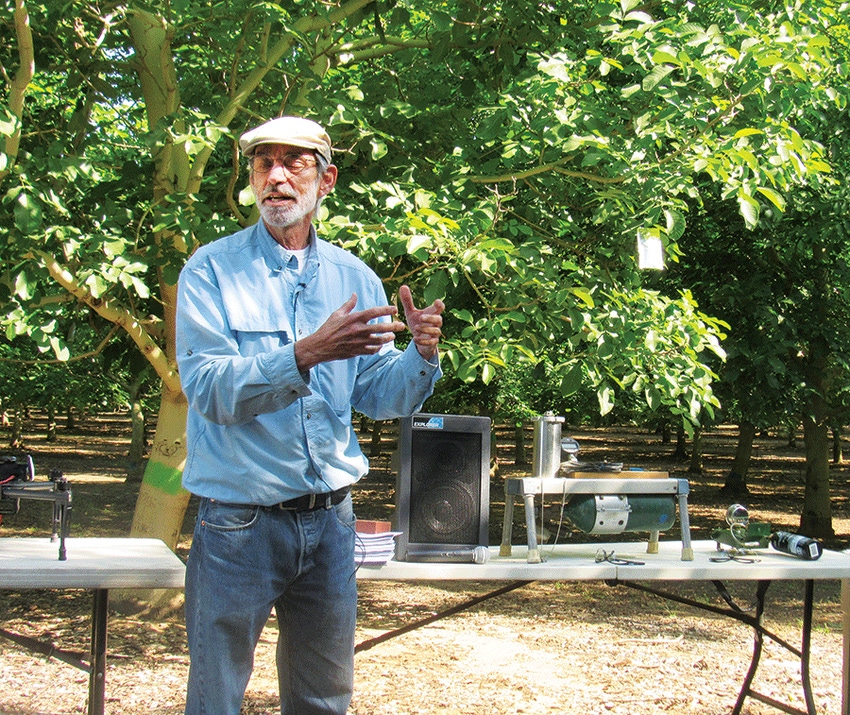
It’s the busiest time of year for walnut growers, with plenty of work to do in orchards between now and the end of harvest season.
In a walnut newsletter posted Aug. 28, University of California Cooperative Extension offers a checklist of sorts for growers as they consider their fall orchard management.
The list of tasks includes such pre-harvest activities as nitrogen fertilization and irrigation, tips to ensure a successful harvest, and ways to prepare the orchard for winter after harvest is over.
Here are some of the suggestions by UCCE advisors Luke Milliron, Janine Hasey, Dani Lightle, and Emily Symmes, and UC-Davis plant pathologist Themis Michaelides.
PRE-HARVEST
Deadwood — Dry summer months are a perfect time to remove deadwood, which can reduce the spread of Botryosphaeria or Phomopsis (BOT).
Fertilization — The nitrogen program should have been completed by the end of August. This will enable young trees to begin the process of hardening-off to reduce early frost susceptibility.
Irrigation — Although recent smoky conditions reduced water demand, farmers could still get behind on their irrigation late in the season. However, it’s more common for farm advisors to see symptoms of over-watered trees, they say.
Growers are advised to use a pressure chamber to determine their trees’ level of water stress, and to cut off irrigation by mid-September to reduce the threat of autumn frost damage in young trees.
HARVEST
Timing — Advisors have been urging growers to get an early start on practices to reduce quality losses due to navel orangeworm (NOW), mold, and darkening kernel color. Orchardists should only shake what they can pick up on the same day, as walnut quality diminishes rapidly in the first 9 hours after shaking, the advisors note.
Samples — Taking harvest samples from the orchard floor will help the grower stay on top of damage from worms and other factors.
Growers can differentiate between codling moth or navel orangeworm damage and factors such as sunburn, the advisors say. Grade sheets often don’t provide as much detail as a farmer can get by gathering a representative sample from each production block.
POST-HARVEST
Cleaning — Once harvest is complete, farmers should make sure hullers, dryers, and areas around orchards are cleared of trash nuts that could harbor moth larvae, the scientists say.
Sanitize orchards as part of NOW management by shaking or hand poling, blowing berms, and then flail mowing mummies before the next season. Do it quickly in case early rains come.
Potassium — If July leaf sampling showed potassium deficiency, growers should plan to apply potassium fertilizer this fall or winter after about 6 inches of rain has fallen to wet the soil.
Potassium should be applied in a narrow band along the tree row to improve uptake efficiency, particularly in heavier soils.
Cover crops — Planning early for cover crops by lining up seed and equipment ahead of time will ensure the crop is sowed at the right time, the advisors say.
Planting is usually done in October or November, once harvest is finished, with young non-bearing orchards being seeded in October.
For more information, read the full newsletter on the Tehama County UCCE website: http://cetehama.ucanr.edu/
About the Author(s)
You May Also Like






